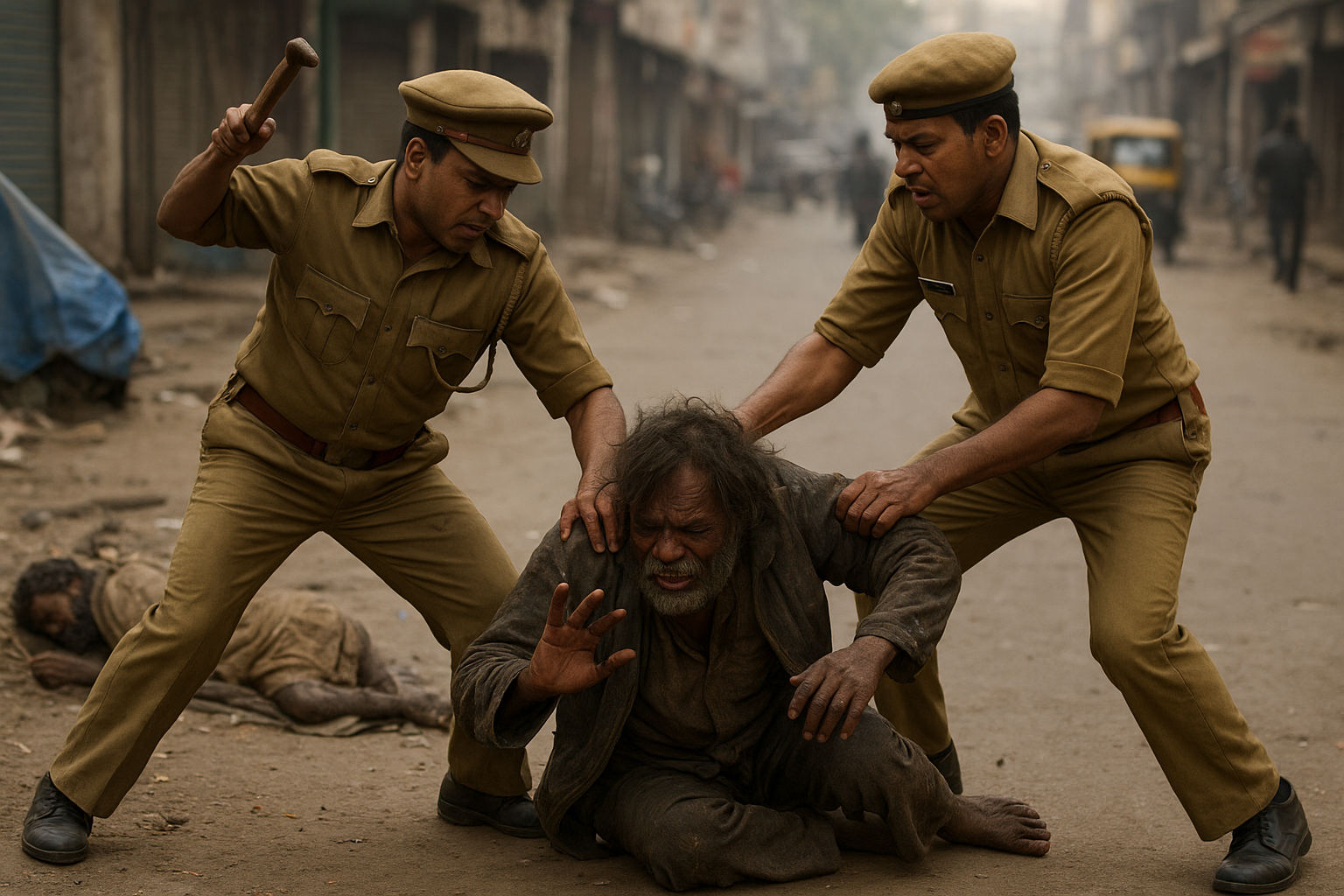
Behind the Curtain: Policing, Authority, and the Erasure of Homeless Lives in Delhi
Every day on my way to work at a homeless recovery shelter in Delhi, I walk past the same stretch of road under the Kashmere Gate–Shahdara bridge. It’s a place of small routines: men huddled in circles playing cards, a few sharing jokes, others lying flat on worn blankets, faces turned away from the world. Some sit quietly, their expressions heavy — the kind of heavy that comes from carrying too much for too long.
By my count, there are 100–150 people who call this area home. But home here is temporary — not because they want to leave, but because they are never allowed to stay still for long.
The Everyday Eviction
In Delhi, I’ve seen this scene play out hundreds of times: a policeman shouts, people scatter. Those who hesitate or move too slowly feel the sting of a lathi. Sometimes this happens once a day. Sometimes two or three times. The people who live here know the drill. When they hear the order, they grab what they can and disappear into nearby lanes or underpasses.
Why? Because a VIP convoy is coming through — a Chief Minister, a Lieutenant Governor, some other dignitary. And just as shopkeepers sweep their floors before a customer arrives, the city “sweeps” its streets of visible poverty. Once the motorcade passes, the homeless return to their spots, as if nothing happened — until the next time.
One man showed me a scar along his arm from a beating. Another pulled up his shirt to reveal bruises on his ribs. Some spoke bitterly about this ritual. Others seemed resigned, telling me: “Yeh toh roz ka hai”— this is just daily life.
When the City Turns Its Back
When I’ve asked police about this, most have brushed me off. A few, more willing to engage, say it’s for “security. ” But if security was truly the concern, why aren’t all people along the route moved? Why only the homeless? That’s when the other explanation comes: “This population is more likely to commit crimes.” In other words — they are already seen as dangerous, untrustworthy, and undeserving of public space.
This is what Pierre Bourdieu would call symbolic violence — not just physical harm, but the repeated, unspoken message that your existence is a problem. And it’s a form of governance. Political scientist James C. Scott famously described how states “see” their populations in order to control them. Here, the reverse applies: to not see — to hide and erase — is also a form of control.
The Curtain Has Always Been There
During Donald Trump’s 2020 visit and again for the G-20 summit, Delhi made international news for covering informal settlements with green cloth so foreign dignitaries wouldn’t see them. Many saw itas an extraordinary act. But in truth, that curtain has always been there. Sometimes it’s literal — fabric stretched across a fence. Sometimes it’s concrete. Often, it’s the police themselves.
Erving Goffman, in his work on social performance, described the front stage — the curated image wepresent — and the backstage, where the less palatable truths live. In Delhi, the front stage is the clean road for the VIP. The backstage is hidden under bridges, behind markets, and inside shelters like mine.
One police officer, more candid than the rest, told me quietly: “They don’t want to see them. Looking at them reminds them of how bad things are, and how much work is left. So they would rather not look.
” That sentence has stayed with me. It’s not just about inconvenience. It’s about the psychological refusal to face inequality.
Erased from the Picture
The daily eviction of homeless people from public view is not simply about tidiness or order. It’s a form of politics of invisibility. It tells those with homes that the city is fine, that poverty is elsewhere— and it tells the poor that they are better unseen.
It’s also about shame — not the shame of the people living on the street, but the shame of a society that doesn’t want to acknowledge them. During these “clearing” moments, the city acts like a host embarrassed by an untidy room, frantically pushing everything into a closet before guests arrive. The difference is, here, the “clutter” is human lives.
Why This Matters
Homelessness in Delhi is not a fringe issue. It’s tied to internal migration, caste discrimination, precarious work, and the erosion of social safety nets. Hiding it doesn’t solve it. It just keeps it comfortably out of sight for those with the power to change it.
In the shelter where I work, I see every day how structural precarity shapes not only survival but also identity. Outside, I see how the same people are pushed, beaten, and made invisible in service of the city’s image. The curtain — whether made of cloth, concrete, or police presence — will remain until we confront the deeper truth: we can’t build a just city if its most vulnerable residents are only visible when no one important is looking
Related Posts
War, Power, and the Wounded Psyche: The Truth Behind Global Conflicts
When we look at wars and conflicts throughout history, they often seem like a...
Why We Avoid Difficult Talk: A Psychoanalytic and Relational Perspective
Difficult conversations are an integral part of human relationships. Yet, many of...


